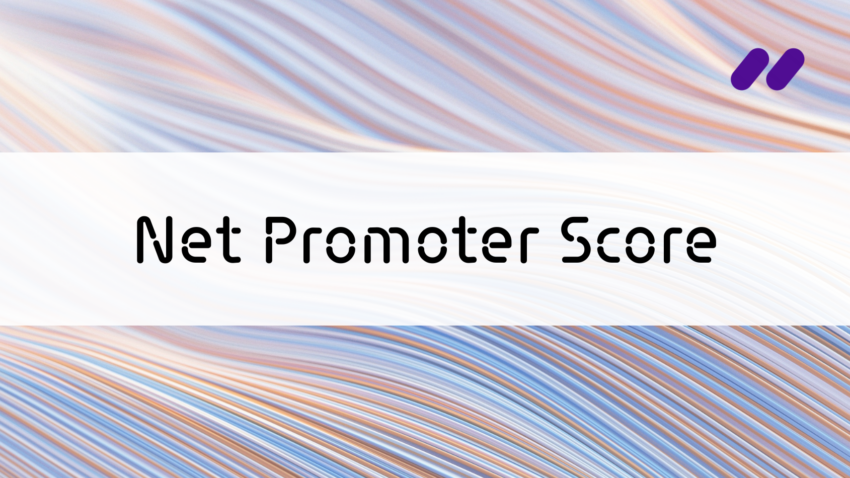A Net Promoter Score survey lays the groundwork for successfully integrating customer experience into your company’s big decisions. In reality, more often than not, NPS data is imperfectly analyzed and under-utilized. To correct this, the next step in tactical CX is to take your NPS score and apply the latest tools for data gathering and analysis. This will boost your company’s ability to implement new strategies for growth.
1. See beyond the NPS calculation
Through customer feedback, CX specialists paint a clear picture of who customers are and what they think of a company’s products or services. Net Promoter Score is currently the most proven and frequently used metric of customer loyalty and satisfaction.
By starting with a single question, the NPS survey offers an easy way to gather feedback of this type. The question asks, “How likely is it that you would recommend [brand] to a friend or colleague?” Respondents answer on a scale from 0 (not at all likely) to 10 (highly likely).
Using their answers, respondents are categorized and NPS is determined based on a simple calculation: Net Promoter Score = % Promoters – % Detractors. This calculation provides a standardized quantitative benchmark that’s then tracked over time.
The second part of the NPS survey asks one or more follow-up questions that gather granular, qualitative, text-based data, answering why customers chose the rating they did. Properly analyzed, text-based qualitative feedback reveals much more than a number on a scale.
As more industries mature and are competitive on CX, closing the customer feedback loop becomes essential to growth. You can only know how your customers really feel about your brand and business by combining your quantitative and qualitative NPS results with the help of emerging high-powered analysis solutions.
2. Use new technologies to analyze customer data and improve NPS
To get a fuller picture of your NPS, it’s important to have the right NPS software, which will depend on your company’s functionality needs, budget and goals. Regardless of which NPS software you choose, it will probably include built-in calculators for assessing customer satisfaction levels.
AI automates processes that were once labor intensive and expensive, including data collection, analysis and implementation across different departments.
Now, take that tech further with AI. The automation provided by AI technologies has an impact on all kinds of industries, no matter how mature or emergent. AI automates processes that were once labor intensive and expensive, including data collection, analysis and implementation across different departments. This lets companies close the customer feedback loop and accelerate feedback as they grow.
Technologies such as IoT and feedback collection, deep learning and data analysis, predictive AI and implementation, all have a technological impact on NPS, including changing NPS methodology and the way information flows within a company.
[Related: What is NPS analysis? 101 Guide]
3. Integrate NPS into a data-driven CX strategy
While NPS gives you two key numbers and identifies detractors, it often doesn’t provide enough information about the customer journey to make key business decisions. The real organizational power of NPS comes when you put your score to work alongside other customer feedback within a broader CX strategy.
Build a customer-centric culture by setting NPS-related goals at all organizational levels, tying NPS data to benefits or using it to compare the performance of different branches. While the concept is straightforward, implementing this way of operating requires executive commitment, operational discipline and state-of-the-art technology. No matter your score, you can improve on it when it’s part of smart company-wide CX processes and procedures.
To fully map your customers’ journeys, it’s crucial to understand their experiences at all touchpoints along the way.
To fully map your customers’ journeys, it’s crucial to understand their experiences at all touchpoints along the way. This includes recognizing that one bad experience can lead to a bad corporate reputation, and being aware of the experiences that keep your customers happy, whether great products or a great staff. Your NPS, though indicative of your support team’s performance at a high level, only tells half the story.
Used in tandem with qualitative customer feedback and insights, NPS gives customer support teams critical information they can use to resolve issues and improve customer engagement.
4. Tie NPS survey feedback to deep data analysis
If your results reveal a high detractor score, it’s clear that an aspect of your customer service is broken. You need to find out why you’re seeing such high levels of customer churn, where your customer service can be improved, and at what stage improvement is needed in customer experience. A solution that provides comprehensive sentiment analysis is one way to know for sure if your customers see your business in a negative, neutral or positive light.
Many companies and CX specialists rely on their Net Promoter Score to assess their customer service performance, but they’re not seeing the full picture. Customer satisfaction can’t only be measured in surveys. A comprehensive understanding of customers requires text-based feedback from other sources such as online reviews and social media comments.
Sentiment analysis tools designed to rapidly make sense of large volumes of customer feedback give organizations instant insights into current and future customers’ feelings about a product or service. Companies find out whether the feedback is negative or positive, what topics of interest are discussed, the nature of customers’ experiences with staff, the complaints being expressed and the issues being identified, and so much more.
With beautiful simplicity, NPS combined with a deeper analysis of your customer feedback lets you quickly learn what matters most to your customers, allowing you to confidently make decisions about your future direction.


